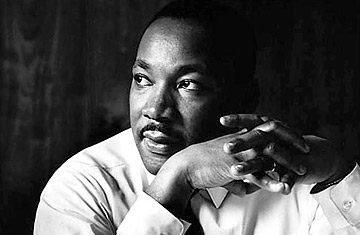
(7 of 11)
"Free at last,
Free at last.
Thank God Almighty,
We are free at last."
Even the Unions. The march made irreversible all that had gone before in the year of the Negro revolution. In that year, the Negroes made more gains than they had achieved in any year since the end of the Civil War. A speedup in school integration in the South brought to 1,141 the number of desegregated school districts. In the North, city after city re-examined de facto school segregation and set up plans to redress the balance. In 300 cities in the South, public facilities—from swimming pools to restaurants—were integrated, and in scores of cities across the nation, leaders established biracial committees as a start toward resolving local inequities.
New job opportunities opened nearly everywhere, as the nation's businesses sent out calls for qualified Negro help—and, finding a shortage, began training programs for unskilled Negroes. Banks, supermarkets, hotels and department stores upgraded Negro employees. In Philadelphia, Cleveland and New York, pressure on the A.F.L.-C.I.O. construction unions—the most notorious Jim Crow organizations in the North—produced progress toward training of Negro apprentices. San Francisco's tile setters, Memphis' rubber workers and St. Louis' bricklayers opened their union rolls to willing beginners. Television and Madison Avenue blossomed with Negro actors and ad models in "non-Negro" roles. In Denver, Sears, Roebuck & Co., which hitherto had had one Negro employee (dusting shelves), hired 19 more Negroes for a variety of jobs. To varying degrees it was the same way in Houston, at Grant's five and ten, and in San Francisco, where Tidewater Oil took on a Negro for executive training. Even in the South, the job situation improved. Negroes began moving into professional positions in North Carolina's state government. Three Nashville banks agreed to hire Negroes in clerical positions, and some white-collar jobs opened in South Carolina.
Still, for every tortuous inch gained, there are miles of progress left to be covered. There remain 1,888 Southern school districts where segregation is the rule—and scores of other districts where desegregation sits uneasily in token form. Though Montgomery buses are technically integrated, the city's other public facilities still are not. Team sports are still carefully segregated in a large number of Southern institutions; the NBC television network recently canceled coverage of the annual Blue-Gray football game because Negroes are not eligible to participate. Only 22 states have enforceable fair-employment laws on the books. And not counting Mississippi, where there is a total absence of integrated public facilities, those in other Southern states are so spotty and inconsistent (a downtown lunch counter, yes; the city swimming pool, no) that it is hard for a Negro nowadays to know where he may go and where he may not.
Backlash. In general, housing is still the Negro's toughest barrier. Here and there—for example, in Denver's Park Hill residential section, where Negro home buying at first created flurries of panic—colored families have been able to move into white sections with little trouble. But the major metropolitan areas of Chicago, New York,
